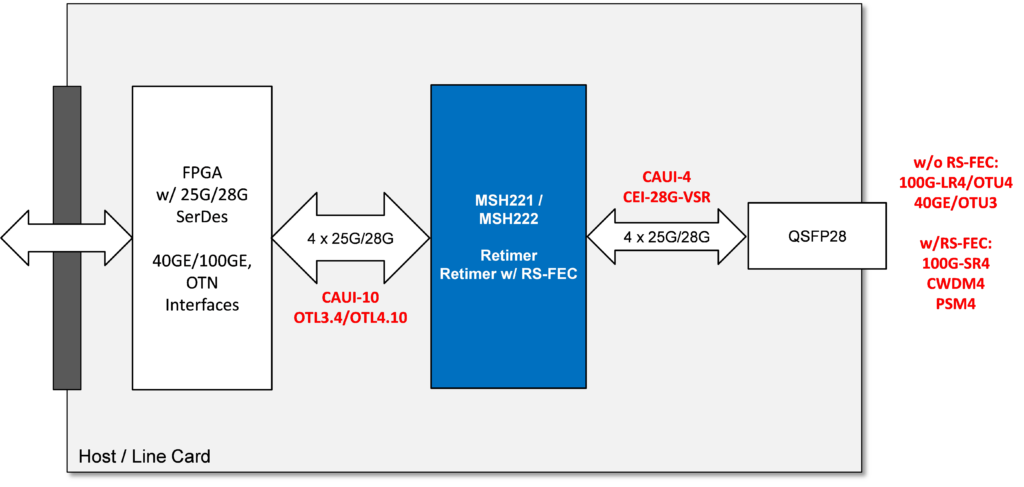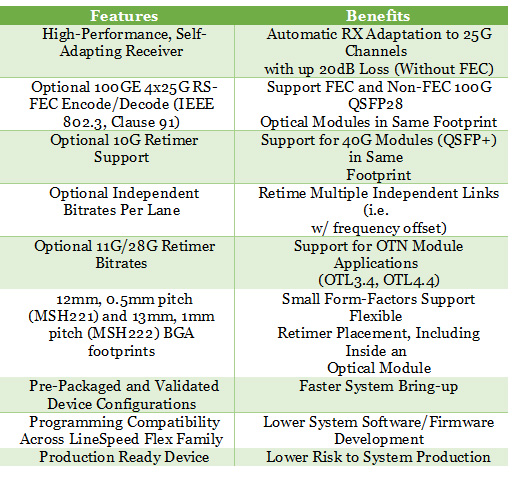Enabling RS-FEC for 100GE with the MoSys LineSpeed™ Flex PHY
Tuesday August 25, 2020By Scott Irwin
Vice President, LineSpeed Products
MoSys, Inc.
Worldwide shipments and revenue for 100Gb Ethernet switches have been growing rapidly, reaching 3.8M ports and $1.1B revenue for Q4 of 2018, according to IDC. This trend has been driven by accelerating adoption in cloud datacenter and large enterprise markets. This can also be seen reflected in the growth of 100G optical transceiver modules used to interconnect switching, routing, computing, and other equipment. A range of 100G optical module types have been created through standards development organizations (SDOs) and Multi-Source Agreement (MSAs) to meet various reach, cost, and other market requirements.
The latest of these optical module standards now require Reed Solomon – Forward Error Correction (RS-FEC) encoding to extend the reach and/or reliability of these 100G optical links. This RS-FEC encoding, as defined by the IEEE in 802.3bj, is applied to the 4x25G interfaces commonly used to connect these 100GE optical modules, such as QSFP28 pluggable modules. The logic to implement the RS-FEC encoder and decoder is large and can significantly increase the size (i.e. logic density) of device required in FPGA implementations. This problem is exacerbated in multi-port solutions.
The MoSys MSH221 (12mm) and MSH222 (13mm) retimer devices with optional RS-FEC encode/decode allow a smaller, lower-cost FPGA to interface to all QSFP28-based optics. This solution can support 100G optical modules with either non-FEC (e.g. LR4) or FEC-based (e.g. SR4, CWDM4, PSM4, etc.) standards. And with its 10G Retimer capability, this same device can also support backward compatibility to 40G (4x10G) pluggable modules in the same port. With its small, 12mm, fine-pitch footprint, the MSH221 can even fit inside a QSFP28 optical module to enable the RS-FEC capability.

Features and benefits of the MSH221 and MHS222 100G Retimer devices include:

The MSH221 or MSH222, coupled with a lower-cost FPGA, is the perfect solution for your QSFP28-based interface. A single footprint can support both FEC and non-FEC 100G modules, along with backward-compatible support to 40G modules, while greatly reducing the amount of logic required in your FPGA implementation.
Additional Resources:
If you are looking for more technical information or need to discuss your technical challenges with an expert, we are happy to help. Email us and we will arrange to have one of our technical specialists speak with you. You can also sign up for updates. Finally, please follow us on social media so we can keep in touch.


